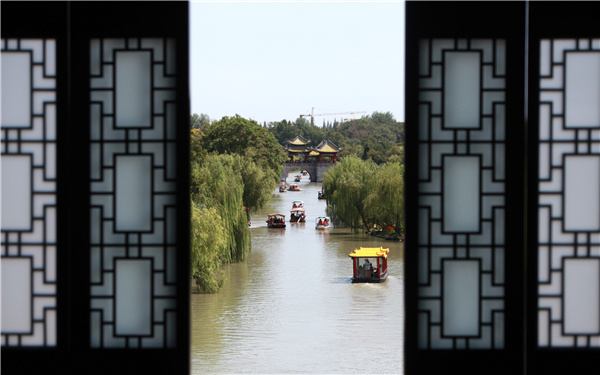

According to China's first detailed historical compendium, Zuo Zhuan, king Fuchai of the Wu kingdom constructed a city called Hancheng and a canal called Han Gou that connected the Yangtze River and Huaihe River for the first time in 486 BC.
Hancheng became today's Yangzhou, and the later construction of canals in different eras, including the Sui (581-618) and Yuan (1271-1368) dynasties, completed today's Grand Canal.
"The finalized canal artificially connected two major natural rivers-the Yangtze and Huaihe," Gu says.
"It has exerted a profound long-term impact on economic and cultural exchanges between north and south. These wouldn't have been possible, otherwise.
"It also set an example for canal construction across China, leading to the final Beijing-Hangzhou Grand Canal, which connects the channels built in different periods."
The Grand Canal's Yangzhou section hosts rich cultural heritage. Since the waterway was inscribed on UNESCO's World Heritage list in 2014, six channels and 10 heritage sites from Yangzhou have likewise gained the status.
"The Yangzhou section is very intricate. Unlike many other cities, where there is only one canal running through or bypassing the city, Yangzhou has a network of waterways, where courses built in different dynasties interweave with natural waters," Gu says.
The Slender West Lake, one of Yangzhou's most renowned scenic spots, for example, is linked with the Grand Canal and is one of the UNESCO sites.